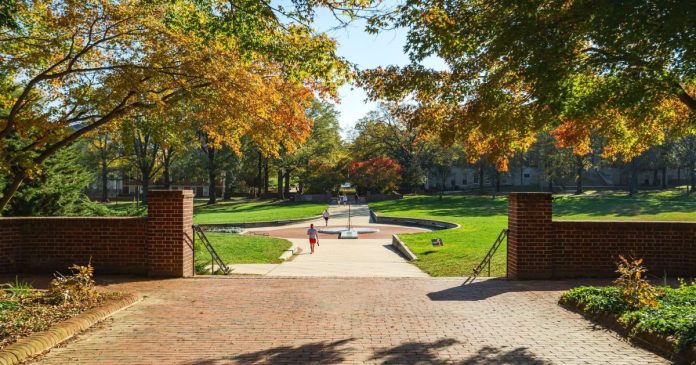As you head to a study session or grab a bubble tea, deviate from your usual gaze at the phone and admire the green specimens arching over your path.
They are part of a vast community of nearly 10,000 trees (part of a collection of 16,000 botanical specimens) that grow on the 1,340-acre campus of the University of Maryland. Not only do they provide great spots for a shady tree change or picnic, but they also absorb carbon dioxide that warms the planet, trap air and water pollution, conserve energy by shading buildings, and provide homes for the UMD’s many squirrels and hawks, pollinators and other wildlife.
They are groomed and cared for by the UMD Arboretum and Horticultural Services team, led by Associate Director Karen Petroff. “An arboretum is essentially a museum of trees,” she said, so her team cares for and plants specimens from around the world, such as sequoias, the tallest trees on earth, in addition to Maryland-native species like oaks and black eucalyptus . “It is important to represent biodiversity and to provide UMD students with a comprehensive teaching collection.”
Stately sycamore and magnificent maple trees have also served as important teaching aids since the university was founded.
“In the early days of Maryland Agricultural College, students learned from trees: how to trim, how to prune, and how to cultivate an orchard,” Petroff said. Today, plant science and landscape architecture students most commonly study the same trees that have existed for decades, but many majors, such as journalism, computer science, and drama, are all making every effort to incorporate campus green spaces into their projects.
Records varied—the 1912 fire destroyed early records, and not all files have been digitized this century—but Arboretum staff can estimate the age of all of its specimens, from centuries-old specimens to seedlings growing around new buildings such as Thurgood Marshall Hall.
As existing trees fall from storms, construction, or disease, the Arboretum team is now seeking climate-resilient options from southern habitats that will stand the test of time and create an incredibly beautiful campus for years to come.
See if this UMD tree surprises you – via:
today.umd.edu
https://today.umd.edu/what-do-yew-know-about-umd-trees














